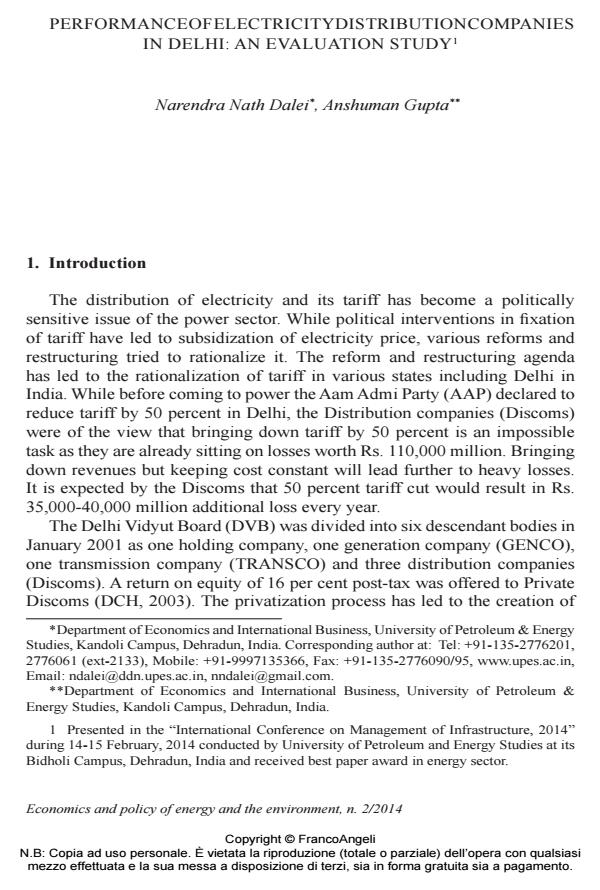Performance of electricity distribution companies in Delhi: an evaluation study
Journal title ECONOMICS AND POLICY OF ENERGY AND THE ENVIRONMENT
Author/s Dalei Narendra Nath, Anshuman Gupta
Publishing Year 2015 Issue 2014/2
Language English Pages 26 P. 111-136 File size 398 KB
DOI 10.3280/EFE2014-002006
DOI is like a bar code for intellectual property: to have more infomation
click here
Below, you can see the article first page
If you want to buy this article in PDF format, you can do it, following the instructions to buy download credits

FrancoAngeli is member of Publishers International Linking Association, Inc (PILA), a not-for-profit association which run the CrossRef service enabling links to and from online scholarly content.
The distribution of electricity and its tariff has become a politically sensitive issue of the power sector. While political interventions in fixation of tariff have led to subsidization of electricity price, various reforms and restructuring tried to rationalize it. The reform and restructuring agenda has led to the rationalization of tariff in various states including Delhi in India. While before coming to power the Aam Admi Party (AAP) declared to reduce tariff by 50 percent in Delhi, the Distribution companies (Discoms) were of the view that bringing down tariff by 50 percent is an impossible task as they are already sitting on losses worth Rs. 110,000 million. In this context, we are trying to make a performance analysis of Discoms to investigate why 50 percent tariff reduction is impossible. The data used in this study were collected from secondary sources like Delhi Electricity Regulatory Commission (DERC), Central Electricity Authority (CEA) etc. The study is based on both qualitative and quantitative performance analysis of Discoms. The results we found that bringing down tariff by 50 percent are an impossible task and there is a need for effective reform and policy change in power sector in Delhi.
Keywords: Privatizations, tariff, discoms, revenue
Jel codes: K23, L11, L94
Dalei Narendra Nath, Anshuman Gupta, Performance of electricity distribution companies in Delhi: an evaluation study in "ECONOMICS AND POLICY OF ENERGY AND THE ENVIRONMENT" 2/2014, pp 111-136, DOI: 10.3280/EFE2014-002006